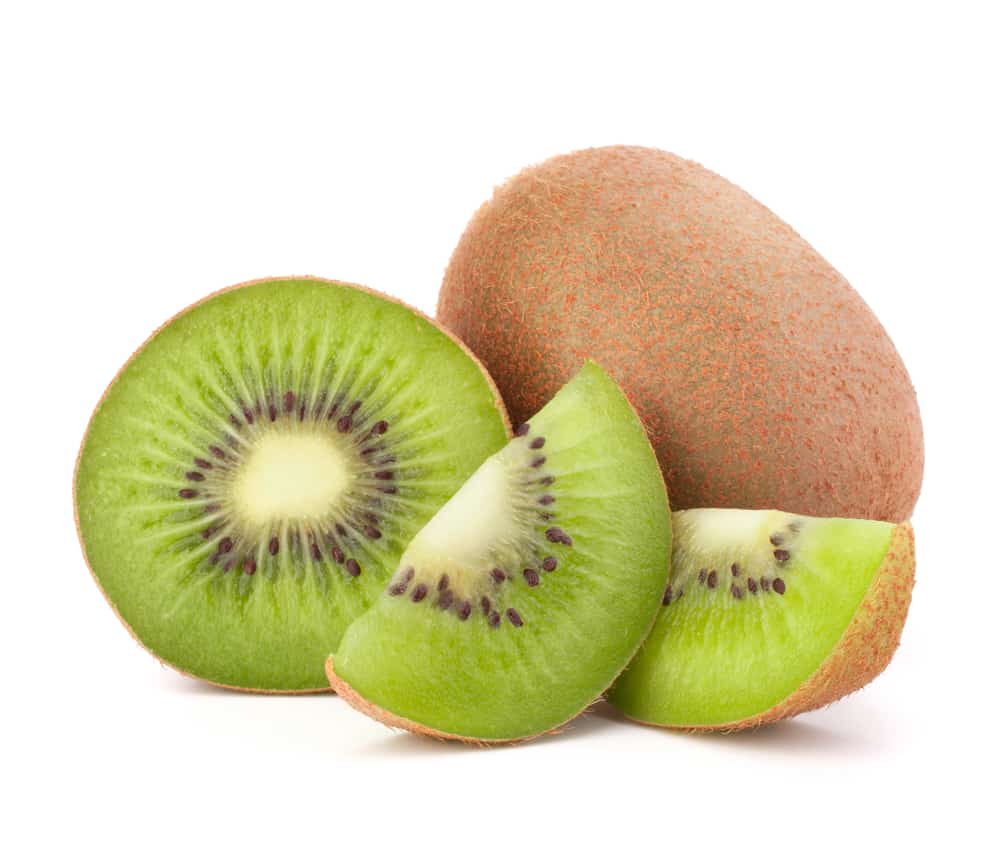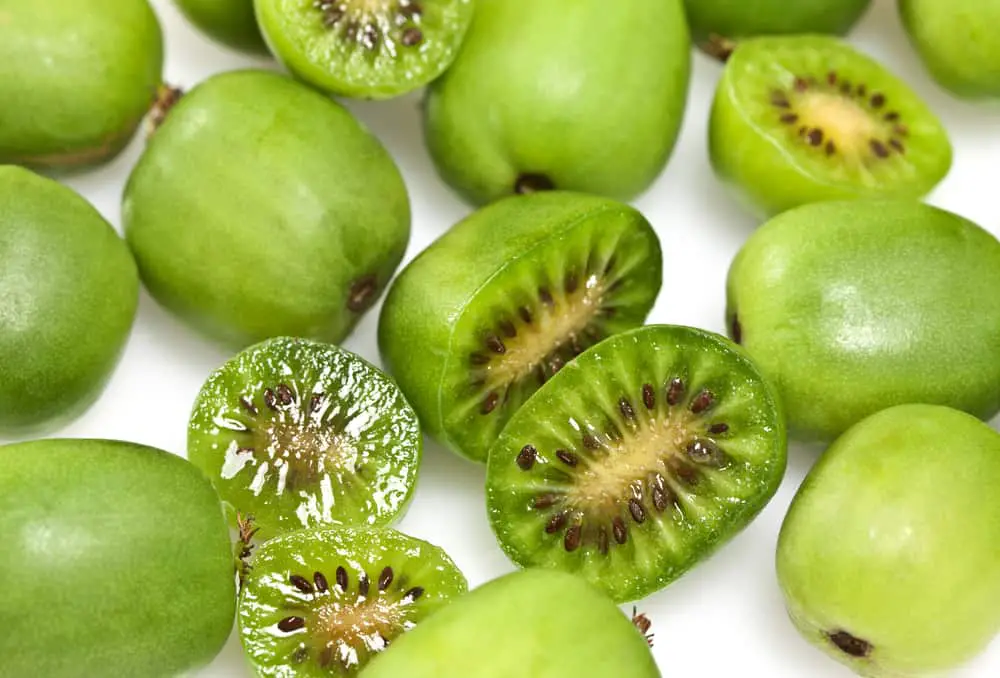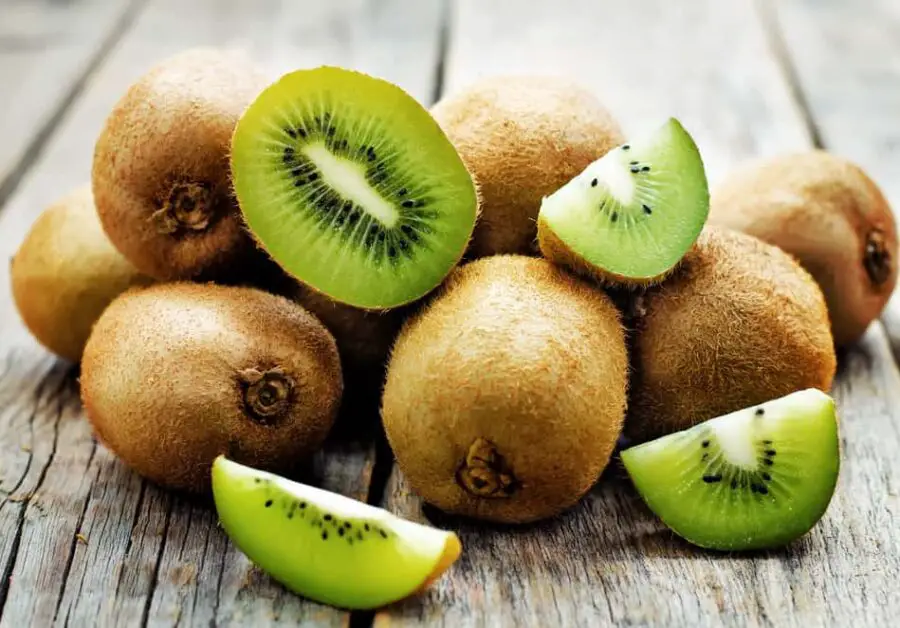Kiwis are packed with juicy flavor. Hidden just beneath that thin skin of fuzzy brown is a dazzling green mouthful of goodness that explodes on your taste buds with each bite.
It’s sweet and a little tart which makes it reminiscent of similar fruits, especially citrus like oranges, tangerines and clementines.
Given this, you might wonder if it is indeed citrus.
Despite the similar taste and mouthfeel, kiwi is not a citrus fruit.
Kiwis and citrus fruits belong to separate genera (or classification). The kiwi belongs to the genus Actinidia which produces its edible berries on woody vines.
Oranges, lemons, and other citrus belong to the Citrus genus (Rutaceae family) which is characterized the production of fruits on flowering trees and shrubs.
What Kind of Fruit Is Kiwi?
Kiwi is technically classified as a berry.
However, all berries, including kiwis, fall under the broader classification of fruit. Other fruits classified as berries that may surprise you include tomatoes, grapes, blueberries and bananas.
Kiwis are classified this because the berry comes from one ovary of one flower. It is the simplest type of fruit and may contain one, or as the case with kiwis, many seeds. The interior (edible portion) of the ovary is soft and fleshy.
Each flower produces one kiwi fruit, and within it are the seeds of the kiwi. An example of a single seed fruit would be an avocado. Similar to kiwis, watermelons have many seeds contained within them.
Is Kiwi a Vegetable?
No, kiwi is not a vegetable. Botanically, fruits come from the flower of a plant and contain seeds. Vegetables come from other parts and can include leaves, roots and stems.
By this definition, it’s clear to see that a kiwi doesn’t fit the definition of vegetable since it contains seeds.
Is Kiwi Acidic?
Yes, kiwi fruit is acidic, but that’s not uncommon since most fruits are as well. The kiwi derives its acidity from the presence of quinic, citric and malic acids.
The pH range for kiwi fruit is between 3.1 – 3.96 which places it in the category of high acid food. Variances in the pH can be attributed to the fruit’s level of ripeness.
Because of its acid content, kiwi has a place in the kitchen as a meat tenderizer by effectively breaking down connective tissue without damaging the muscle of the meat. It has a largely neutral flavor in this setting, making it a great addition to marinades.
What’s the Kiwi Fruit’s Original Name?
As previously mentioned, kiwis were originally called Chinese gooseberries. Kiwis grow wild in China and were a favorite of macaque monkeys native to the region. Because of this, locals referred to the fruit as “monkey peaches”.
How the fruit made its way from China to New Zealand and later the rest of the world remains a bit of a mystery. According to the government of New Zealand, the Chinese gooseberry first arrived in the country at the beginning of the 20th century.
After a few false starts at cultivation, the first successful crops were produced in 1910. However, it wasn’t until the 1950s that New Zealand stepped up their efforts to export kiwis to the rest of the world, including the United States.
Unfortunately, anything branded with “Chinese” in the term was considered a marketing no-no during that period. It was around this time that the United States was engaged in the Cold War with China at the top of the list of enemies.
So with Chinese gooseberries not an option, the first attempts were made at rebranding them as “melonettes”. This effort fared little better but this time it came down to economic reasons – the United States levied heavy tariffs on these types of products making them too expensive for importers, especially on an unproven commodity like the new fruit.
Then in 1959, New Zealand growers struck on the idea of naming the fruit “kiwi” after their country of origin. The renaming proved a success, and the name is still with us today.
When Are Kiwi Fruit in Season?
The kiwi fruit flourishes in sub-tropical climates like China, where it originated, and the northern regions of New Zealand, where it’s been grown for over 100 years. However, it’s a hearty fruit and can be grown in less suitable environments as well. Today, the kiwi is produced in many parts of the world that are not wholly sub-tropical, including Chile and Iran.
The kiwi fruit is in season in the late fall (typically September – November) but the seasonality can vary somewhat depending upon the region the fruit is grown.
Kiwi fruit has a long growing season – up to 240 days! Because of its sub-tropical nature, it requires very fertile soil, ample sunshine, and water throughout this period.
Kiwi Berry vs Kiwi Fruit
As mentioned earlier, all kiwis are berries, so it’s natural there can be confusion around this question. However, there is a type of kiwi which is referred to as a berry.
The most common type of kiwi – the one with brown, fuzzy hairs covering its flesh is known as the fuzzy kiwi (or A. deliciosa). This is the kind you are probably most familiar with when shopping at the grocery store.

Kiwi berries (or Actinidia arguta) are much smaller than normal kiwis and are about the size of a large grape. They also lack the familiar fuzzy flesh. However, the taste profile is similar and some prefer them to regular kiwis because of the smooth skinned texture.

Vitamin C Kiwi Fruit vs Orange
On a gram per gram basis, kiwis contain more vitamin C than the typical orange.
The average kiwi contains over 160 grams of vitamin C, whereas the average orange contains approximately 85 grams.
The tradeoff, if it matters to you, is that kiwis contain about 60 calories per 100 grams, whereas oranges only contain about 40 calories per 100 grams.

I’m Griffin and I make my living as a freelance writer and wannabe sci fi author. Besides my obsession with words, I have a few others which may or may not include craft beer, backcountry hikes and spending time with loved ones – preferably in that order. Thanks for checking out my work and I hope you enjoy it!

